Leading a group of long-serving bureaucrats who gave Canadian government a sense of stability and consistency, Bryce served as secretary to the cabinet and clerk of the Privy Council under Liberal Louis Saint-Laurent and Conservative John Diefenbaker for nine years (1954–1963). [3] This group continued through five administrations, from Mackenzie King to Pierre Trudeau. Bryce was appointed to chair the Royal Commission on Corporate Concentration in May 1975. He resigned due to illness before its completion, and can be considered to be one of the authors of the report.
Honours
In 1968, he was made a Companion of the Order of Canada "for his services to Canada in various important posts of public administration". [4]
He received honorary Doctor of Laws degrees from the University of Manitoba (1961), [5] the University of Saskatchewan (1970), [6] Mount Allison University (1970) [7] and the University of British Columbia (1980). [8]
Related Research Articles
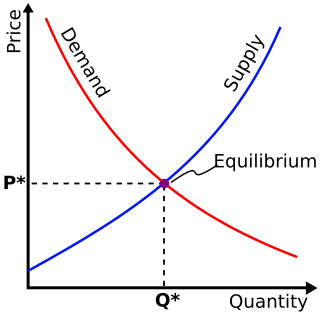
Post-Keynesian economics is a school of economic thought with its origins in The General Theory of John Maynard Keynes, with subsequent development influenced to a large degree by Michał Kalecki, Joan Robinson, Nicholas Kaldor, Sidney Weintraub, Paul Davidson, Piero Sraffa and Jan Kregel. Historian Robert Skidelsky argues that the post-Keynesian school has remained closest to the spirit of Keynes' original work. It is a heterodox approach to economics.

Ramon John Hnatyshyn was a Canadian lawyer and statesman who served as the 24th governor general of Canada from 1990 to 1995.
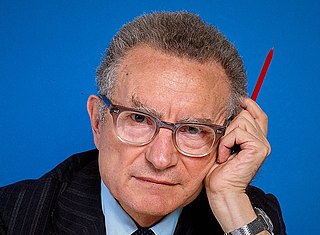
Paul Anthony Samuelson was an American economist who was the first American to win the Nobel Memorial Prize in Economic Sciences. When awarding the prize in 1970, the Swedish Royal Academies stated that he "has done more than any other contemporary economist to raise the level of scientific analysis in economic theory".
Israel Harold "Izzy" Asper was a Canadian tax lawyer and media magnate. He was the founder and owner of the now-defunct TV and media company CanWest Global Communications Corp and father to its former CEO and President Leonard Asper, former director and corporate secretary Gail Asper, as well as former Executive Vice President David Asper. He was also the leader of the Manitoba Liberal Party from 1970 to 1975 and is credited with the idea and vision to establish the Canadian Museum for Human Rights.

Mitchell William Sharp was a Canadian civil servant and politician, most noted for his service as a Liberal Cabinet minister. He served in both the private and public sectors during his long career.

Ralph Edward Goodale is a Canadian diplomat and retired politician who has served as the Canadian High Commissioner to the United Kingdom since April 19, 2021.
In economics, effective demand (ED) in a market is the demand for a product or service which occurs when purchasers are constrained in a different market. It contrasts with notional demand, which is the demand that occurs when purchasers are not constrained in any other market. In the aggregated market for goods in general, demand, notional or effective, is referred to as aggregate demand. The concept of effective supply parallels the concept of effective demand. The concept of effective demand or supply becomes relevant when markets do not continuously maintain equilibrium prices.

Eugene Alfred Forsey served in the Senate of Canada from 1970 to 1979. He was considered to be one of Canada's foremost constitutional experts.

John Whitney Pickersgill was a Canadian civil servant and politician. He was born in Ontario, but was raised in Manitoba. He was Clerk of the Privy Council in the early 1950s. He was first elected to federal parliament in 1953, representing a Newfoundland electoral district and serving in Prime Minister Louis St. Laurent's cabinet. In the mid-1960s, he served again in cabinet, this time under Prime Minister Lester B. Pearson. Pickersgill resigned from Parliament in 1967 to become the president of the Canadian Transport Commission. He was awarded the highest level of the Order of Canada in 1970. He wrote several books on Canadian history. He died in 1997 in Ottawa.
(Robert) Gordon Robertson, was the commissioner of the Northwest Territories from November 15, 1953 to July 12, 1963 who, having been sworn in at the age of 36, remains the youngest person to ever hold the office. He went on to become Clerk of the Privy Council and Secretary to the Cabinet, the top position in the Canadian public service.
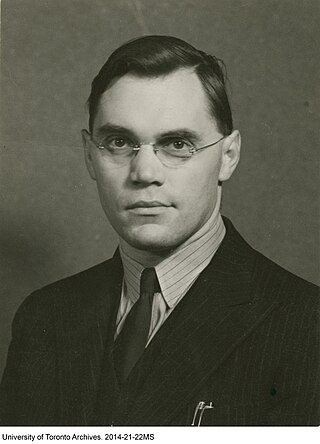
Omond McKillop Solandt, was a Canadian scientist who was the first Chairman of the Canadian Defence Research Board.
Gordon Francis Joseph Osbaldeston was a Canadian civil servant.
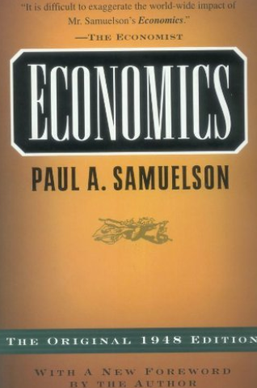
Economics is an introductory textbook by American economists Paul Samuelson and William Nordhaus. The textbook was first published in 1948, and has appeared in nineteen different editions, the most recent in 2009. It was the bestselling economics textbook for many decades and still remains popular, selling over 300,000 copies of each edition from 1961 through 1976. The book has been translated into forty-one languages and in total has sold over four million copies.
William Ferdinand Alphonse Turgeon, was a Canadian politician and judge in the Province of Saskatchewan. He also served as a diplomat for the Government of Canada.

By the arrangements of the Canadian federation, the Canadian monarchy operates in Saskatchewan as the core of the province's Westminster-style parliamentary democracy. As such, the Crown within Saskatchewan's jurisdiction is referred to as the Crown in right of Saskatchewan, His Majesty in right of Saskatchewan, or His Majesty the King in right of Saskatchewan. The Constitution Act, 1867, however, leaves many royal duties in Saskatchewan specifically assigned to the sovereign's viceroy, the Lieutenant Governor of Saskatchewan, whose direct participation in governance is limited by the conventional stipulations of constitutional monarchy.
Lorie Tarshis was a Canadian economist who taught mostly at Stanford University. He is credited with writing the first introductory textbook that brought Keynesian thinking into American university classrooms, the 1947 Elements of Economics. The work swiftly lost popularity after it was charged with excessive sympathy to communism by McCarthyist activists. Instead, the 1948 Economics by Paul Samuelson brought the Keynesian revolution to the United States.

Following the global 2007–2008 financial crisis, there was a worldwide resurgence of interest in Keynesian economics among prominent economists and policy makers. This included discussions and implementation of economic policies in accordance with the recommendations made by John Maynard Keynes in response to the Great Depression of the 1930s, most especially fiscal stimulus and expansionary monetary policy.

The Keynesian Revolution was a fundamental reworking of economic theory concerning the factors determining employment levels in the overall economy. The revolution was set against the then orthodox economic framework, namely neoclassical economics.

Reference Re Farmers' Creditors Arrangement Act is a decision of the Judicial Committee of the Privy Council on the constitutionality of the Farmers' Creditors Arrangement Act as part of the bankruptcy and insolvency jurisdiction of the Parliament of Canada.

Mabel Timlin was a Canadian economist who in 1950, became the first tenured woman economics professor at a Canadian university. Timlin was a pioneer in the field of economics and is best known for her work and interpretation of Keynesian theory, as well as Canadian immigration policy and post WWII monetary stabilization policy. In addition to her successful research career, Timlin was the first woman to serve as vice president and president of the Canadian Political Science Association. She was also one of the first women and one of the very few Canadian economists to serve on the Executive Committee of the American Economic Association.
References
- ↑ Colander, David; Landreth, Harry (1998), "Political Influence on the Textbook Keynesian Revolution: God, Man, and Laurie (sic) Tarshis at Yale" (PDF), in O. F. Hamouda; B. B. Price (eds.), Keynesianism and the Keynesian Revolution in America: A Memorial Volume in Honour of Lorie Tarshis, Cheltenham: Edward Elgar, pp. 59–72
- ↑ "The Honourable Robert Broughton Bryce, Former Clerk of the Privy Council (1954-1963)". Privy Council Office. Archived from the original on 2012-02-18. Retrieved 2009-03-05.
- ↑ "Robert Bryce (Obituary) | The Canadian Encyclopedia". www.thecanadianencyclopedia.ca. Retrieved 2023-11-13.
- ↑ Office of the Governor General of Canada . Order of Canada citation . Queen's Printer for Canada. Retrieved 24 May 2010
- ↑ "Honorary Degree Recipients". University of Manitoba. Retrieved 2009-03-05.
- ↑ "Honorary degree recipients". University of Saskatchewan. Retrieved 2009-03-05.
- ↑ "Honorary degree Recipients". Mount Allison University. Archived from the original on 2010-12-06. Retrieved 2009-03-05.
- ↑ "Honorary Degree Citations". University of British Columbia. Retrieved 2009-03-05.
External links
- Bothwell, Robert (16 December 2013). "Robert Bryce". The Canadian Encyclopedia (online ed.). Historica Canada.
- Mollins, Carl (15 December 2013). "Robert Bryce (Obituary)". The Canadian Encyclopedia (online ed.). Historica Canada.
- Shoyama, Thomas K. (16 December 2013). "Royal Commission on Corporate Concentration". The Canadian Encyclopedia (online ed.). Historica Canada.
- Robert B. Bryce fonds
The Honourable Robert Broughton Bryce | |
|---|---|
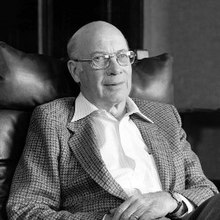 Bryce in 1984 | |
| Clerk of the Privy Council | |
| In office January 1, 1954 –June 30, 1963 |